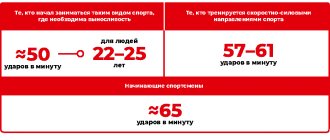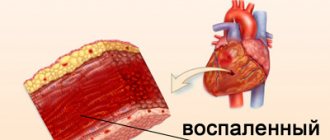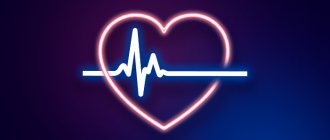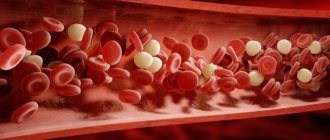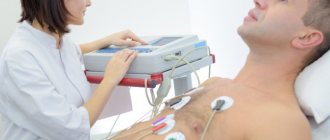The average heart rate when running and monitoring its norm is very serious. Any physical activity affects all systems, internal organs and muscle mass. Therefore, it is necessary to control your own condition and prevent it from worsening. In standard mode, the body functions adequately, but if a person loads himself with cardio training, he must monitor his heart rate. Their meaning provides a lot of information - with weak training there will be no noticeable effect, but with excessive training, disturbances in the functioning of all organs may appear. It is recommended to separate beginners and athletes - for different categories, heart rate and its maximum are different.
Who should monitor their heart rate?
Running is an impact on the body, the strength of which will only increase along with speed. Therefore, when you increase your pace, your body's consumption of important substances and oxygen from the blood increases. To speed up the delivery of these microelements, the heart muscle has to contract faster.
Your optimal life-time and maximum heart rate will change over the years. But age is not all that will really change the rate.
Will affect:
- gender – the normal heart rate when running for men will be slightly higher than for female peers;
- level of physical fitness - a beginner and an experienced runner will have different paces;
- bad habits - if a person smokes or likes to drink, the heart rate will quickly increase;
- stress and emotional distress - this can include any stressful situation, torment and problems that affect desire and strength;
- state of health - even a common runny nose can disrupt the rhythm, and colds and serious illnesses become a reason to weaken training or abandon it;
- weather - strong winds, drizzling rain or snow are worth postponing classes.
Those who are just starting out are advised to listen to themselves and avoid serious excesses of frequency. Normal heart rate during running remains within the normal range or slightly exceeds it. New athletes usually don't want to do this type of training, but it is the safest way to achieve results.
Beginners aren't the only group that needs to count their heartbeats. Even professionals who build a career in sports are counting. They regularly increase their loads, so it is important for them not to overexert themselves. If you do not calculate it, the risk of injury or provoking illness will become much higher.
Controlling the maximum actually permissible heart rate when running allows you not only to lose extra pounds, but also to get to know yourself better.
Peculiarities
Tension varies; it depends on the force with which the body is forced to move in the process. By increasing speed, the body increases its need to absorb the substances it needs and changes ongoing physiological processes.
The heart is capable of pumping blood at different speeds. When the stress on the artery walls increases during exercise, the heart rate increases.
If you run, your normal heart rate will be higher than if you sit on the couch, which is logical. This is in a completely healthy and trained person. For people who are overweight, have a fever or other problems, it is even higher. But for such categories, an adjusted plan for working on oneself must be created separately.
Who should I turn to for help with organizing the training process?
Without deep knowledge of the organization and functioning of the body, it is difficult to organize a training regimen in the right way on your own. A fitness instructor handles this mission. If you decide not to go to the gym, but to run on your own, a sports doctor will come to the rescue.
A sports doctor is a specialist who understands a healthy lifestyle and proper methods of losing weight. He will determine the state of the body, allow you to train and decide which sports you have a genetic and phenotypic predisposition to. The doctor will adjust the dynamics of the loads according to the functional capabilities and select the optimal exercises for developing endurance (a set of pedagogical, medical-biological, psychological and pharmacological techniques). A sports doctor also treats occupational injuries and illnesses.
Another highly specialized specialist in sports medicine is a rehabilitation specialist or exercise therapy doctor. Helps restore the functions of the musculoskeletal system by selecting the optimal complex of physical therapy.
Changes with increased heart rate
When jogging, it is 120-130 beats per minute. This is the most suitable atmosphere, it makes it easier to absorb oxygen from the blood. This has little effect on changes in the body - no weight is lost and no mass is gained. But you won’t be able to get exhausted in the process either.
From the useful:
- Heart training. With the help of such activities, you can improve blood supply to the whole body, stabilize the nervous system, and prevent diseases.
- Memory abilities and reaction speed become better.
- Fat burning level. This running heart rate is the level that is perceived as a signal to use fats instead of carbohydrates for energy. The main rule is to run for at least 20 minutes.
- Health improvement. In addition, stress and anxiety levels decrease.
Higher - from 130 to 145 beats per minute. This is what athletes usually do before going to the main part of the training. This is no longer a health jog, but it’s not yet a training run either. It is advisable to maintain a similar rhythm for at least a couple of minutes, then the body will prepare for more drastic exercises.
What heart rate should be while running - the norm for any future champion varies. A steadily training person has 140 at an increased pace of movement and average speed. Heart rate is a rather individual indicator. Where the beginner is out of breath and unable to continue, the experienced runner is not even tired yet. Age should also be taken into account. If at 55 years old the race causes 140, then at 20 years it is usually no more than 120.
A frequency of up to 165 is considered a training frequency, but this is usually used by athletes who develop endurance. Changes occur in the body that fitness enthusiasts use in the short term to lose fat. You can't run like this for a long time.
When training for acceleration, you need to alternate between the fastest movement at values of 175-180 and slow movement. This beating speed can be harmful if you practice on your own. Acceleration to such body capabilities is allowed only under the supervision of an experienced mentor.
How to determine the norm when running
The meaning of this indicator is purely personal for everyone. It can be installed at a level where it is comfortable to walk the distance without deteriorating his well-being. It is also important to take into account physical fitness. To find out how many beats per minute will be normal for a particular athlete, you need to purchase a heart rate monitor.
This is especially convenient if the runner wants to get a certain load or strive to achieve a goal. If you just need to lose excess weight, then running long runs with a running heart rate that does not exceed 130 per minute is suitable.
It is important to purchase not only a heart rate monitor, but also special clothing in which you will be practical and comfortable to move. An unsuitable or low-quality sports suit does not allow air to pass well to the skin, causing excessive sweating. It's stuffy, sweat constantly flows through the body, it doesn't stretch well and presses.
Even for amateur training, it’s worth choosing a set that you like – bright, convenient and comfortable. These include things from Stayer:
- Practical. Non-staining and without unnecessary elements.
- Bright. Stylish and noticeable.
- Comfortable. The main quality of clothing is comfort when moving.
- Price. For high quality and design – low.
Correctly sized sneakers, clothes that make it pleasant to work out in, a heart rate monitor and desire. This is enough to achieve any results.
There are 3 running categories:
| Beats per minute | Duration, min | Note | |
| jogging | 130-150 | 20-40 | Harmless, you can do it yourself |
| Middle distances | 150-170 | 10-20 | It is better to consult a specialist and monitor changes in your condition. |
| Acceleration | 170-190 | 5-10 | Only under the supervision of a trainer |
This is average data. To identify your own indicators, you need to use a formula and control possible changes.
For young people, the maximum allowable formula will be:
220 –x (for the stronger sex);
196 – x (for women), where
X – number of years.
What is the normal heart rate for a 28 year old man when running: 220-28=192 beats per minute. It is not worth allowing an increase even more; this is fraught with the appearance of serious negative changes, especially if it is maintained for a long time.
Jogging at the usual level
For professionals and simply physically developed people who regularly engage in such exercises, this is normal.
When the rate exceeds the normal level, the runner temporarily returns to a walk, waits for the heart rate to decrease, then accelerates again. Usually he moves at this rhythm for half an hour.
It is important to observe your own breathing. Each inhalation and exhalation is usually deep and unhurried, the duration of each repeats the previous one. This makes it easier to recover and not stop.
If you try to run, despite your heart jumping out of your chest, then instead of a quality workout you will only get harm.
When fat is burned
Any running will provoke energy expenditure. With a normal or reduced heart rate, they are considered most effective. But with such loads, the duration of the race is of great importance. Only after half an hour the body stops using carbohydrates for breakdown and begins to use its own fat deposits. Therefore, an hour-long run becomes as useful as possible.
Beginners and untrained sports enthusiasts should start with a short jog. When the body gets used to it, you can move on to races with short transitions to intense running.
When this rhythm becomes familiar, add small sharp transitions to acceleration in easy mode. Another effective way to get fit is to move on rough terrain. Climbing up and down hills has a great effect on the cardiovascular system. If you follow these tips, you will lose much more fat from your waist.
How to increase endurance?
Reduce heart rate when running by regular training with a gradual increase in loads to the most effective, but not exceeding the permissible harmless threshold.
For an untrained person, it is better to start with light loads. The heart rate in such cases should be within 40% of the maximum (at 30 years old, the normal heart rate when running is considered to be 76 beats per minute). For some, walking at a calm pace is enough to achieve this level. The main thing is to be patient and not to overdo it, otherwise it will be difficult for your heart to work under excessive stress, and you will soon feel chest pain, shortness of breath and severe weakness.
The heart rate during physical activity at the next stage of endurance training should not exceed 50%. A month of frequent training (5 times a week) lasting about 30 minutes is enough. Then the level gradually increases. Now they plan activities that keep the heart rate ranging from 50-65% to 80% of maximum. As before, increase the load little by little (faster running pace, exercise bike, elliptical trainer - choose to taste). The lungs and cardiovascular system work more intensely, and blood flow improves significantly. An athletic heart develops. Bradycardia gradually develops. As a result, all these changes significantly increase endurance to physical activity. In this zone, reserves of fat cells are burned.
In the future, each workout consists of a warm-up, aerobic and anaerobic zone.
There are techniques for increasing endurance for runners. The most banal and simplest way is to gradually increase the distance and increase the heart rate.
Optimal heart rate when running
The normal heart rate at which you should engage in this sport is 115-130 beats per minute. It stimulates blood circulation, accustoms you to exercise, breaks down and removes lactic acid, restores physical and psychological health, removes fat and gives the body an athletic shape.
The main thing is not to allow an increase to 220 or higher. This value becomes critical - blood pressure rises, all systems begin to work in emergency mode, and this is dangerous.
For women
Girls quite often use this sport to keep themselves in good physical shape. In addition, it stabilizes the psychological state and improves mood.
The norm is from 118 to 137 beats per minute. If you measure your pulse before, during and after exercise, you can determine the level of harmless stress for the body.
Beginners often encounter:
- shortness of breath;
- tingling in the side;
- lack of breathing;
- increase in pressure.
If the normal heart rate does not exceed 80, and immediately after the race – 140, then the run is considered too intense or long. Next time you should reconsider and reduce the speed or duration.
For men
Frequent exercise will make him more resilient and active. You can choose the type - long and leisurely or medium distance, but in accelerated mode. It is important that the activities are enjoyable. Trying to run against your will will quickly end and will not bring the desired effect.
The norm for men is from 115 to 135 beats per minute.
If you exercise regularly, the functioning of the cardiovascular and excretory systems will be normalized, sleep and appetite will improve. A brain saturated with oxygen will work more actively, endorphins are produced - hormones of happiness.
Bradycardia
Atherosclerosis
Ulcer
20135 February 15
IMPORTANT!
The information in this section cannot be used for self-diagnosis and self-treatment.
In case of pain or other exacerbation of the disease, diagnostic tests should be prescribed only by the attending physician. To make a diagnosis and properly prescribe treatment, you should contact your doctor. Bradycardia: causes of occurrence, what diseases it occurs with, diagnosis and treatment methods.
Definition
Bradycardia is a condition of the heart muscle when its contraction frequency is less than 60 beats per minute. Bradycardia is not always considered a pathology; it is rarely an independent disease and more often indicates the presence of problems in other organs or systems.
A slight decrease in heart rate (HR) usually does not affect a person’s general well-being.
Hemodynamic disturbances are observed with a pronounced slowdown in heart rate, in people with various concomitant diseases (more often in the elderly). The main symptoms of bradycardia include unexplained weakness, increased fatigue, pallor of the skin, dizziness and lightheadedness, fainting (Morgagni-Adams-Stokes attacks - fainting or syncope during an attack of bradycardia), shortness of breath (difficulty breathing), pain and discomfort in the chest, blood pressure fluctuations.
Types of bradycardia
Bradycardia is usually divided into physiological, pathological and drug-induced.
- Physiological bradycardia
is a decrease in heart rate that is not associated with pathological processes in the body. For example, in athletes, due to the great training of the heart muscle, there is a decrease in the normal limits of the heart rate. This is a normal condition in the absence of other symptoms (drowsiness, weakness, dizziness, difficulty breathing and chest discomfort). A decrease in heart rate during sleep or when body temperature decreases (for example, when the body is hypothermic) is also classified as physiological conditions. - Pathological bradycardia
(neurogenic, endocrine, toxic, myogenic).Neurogenic bradycardia makes itself felt with increased intracranial pressure, peptic ulcer, renal, hepatic and intestinal colic, glomerulonephritis, as well as after severe infectious diseases.
Endocrine bradycardia is detected when the function of the thyroid gland and adrenal cortex decreases.
Toxic bradycardia accompanies states of intoxication (uremia, liver failure), as well as hyperkalemia and hypercalcemia.
Myogenic bradycardia is associated with cardiac diseases and is the first manifestation of sick sinus syndrome. Normally, the sinus node (the structure of the heart responsible for producing electrical impulses) functions at a frequency of 60–90 impulses per minute, and the heart muscle (myocardium) contracts at the same frequency. With pathology of the sinus node, the production of impulses slows down and bradycardia occurs. The same thing happens when there is a disruption in the transmission of impulses from the sinus node to the underlying structures of the heart (impulse block).
- Pharmacological, or medicinal, bradycardia is possible with abuse and overdose of certain medications (cardiac glycosides, beta-blockers, calcium channel blockers, antidepressants), narcotic substances, etc.
According to clinical manifestations, the following forms of bradycardia are distinguished:
- latent form, characterized by the absence of clinical and ECG manifestations, and sinus node dysfunction is determined by electrophysiological study;
- compensated form with mild clinical manifestations (complaints of dizziness and weakness), ECG changes are present;
- decompensated form, in which persistent sinus bradycardia is determined, manifested by dizziness, fainting, transient paresis, and heart failure.
Possible causes of slow heart rate
In order to understand the cause of bradycardia, it is necessary to know the mechanisms that regulate heart rate.
There is a system of fibers in the heart - the cardiac conduction system, which is responsible for the generation of electrical impulses, their conduction through the heart muscle and the correct contraction of the myocardium. Normally, impulses are produced in the sinus node (also called the sinoatrial node, or SA node) at a rate of 60–90 per minute. sinus bradycardia
occurs .
Next, the electrical impulse travels to the atrioventricular node through a system of conduction bundles. If fiber damage occurs at this level, non-sinus bradycardia
. The types of bradycardia are no different in their manifestations, but this division is important for making a diagnosis and choosing the right treatment tactics.
Reasons that disrupt the structure of the conduction system of the heart, i.e. cause organic damage to the myocardium are:
- myocardial infarction with subsequent replacement by connective tissue of destroyed heart structures, including important bundles that conduct electrical impulses from the sinus node;
- coronary heart disease, when, due to atherosclerosis of the coronary arteries, adequate blood supply to the myocardial areas in the area of the conduction bundles is disrupted and sclerodegenerative fibrosis (replacement with connective tissue) of the affected areas develops;
- myocarditis - inflammatory damage to the heart muscle;
- congenital anomalies of the structure of the conduction system of the heart.
During intoxication during infectious diseases, with severe sweating, vomiting and diarrhea, a significant loss of electrolytes (potassium, sodium and magnesium ions) occurs, which leads to disruption of the water-salt balance in the body and the occurrence of various heart rhythm disturbances.
Some thyroid diseases, such as hypothyroidism, are characterized by a decrease in the synthesis and function of thyroid hormones, as a result of which metabolism is disrupted and heart rate is reduced.
Possible causes of bradycardia include general hypothermia, increased intracranial pressure (with cerebral edema, tumor process, meningitis, cerebral hemorrhage), lead poisoning, nicotine, etc.
What diseases cause bradycardia?
The list of diseases and conditions for which bradycardia is diagnosed is quite extensive:
- sick sinus syndrome;
- atrioventricular block;
- myocardial infarction;
- cardiac ischemia;
- myocarditis;
- infective endocarditis;
- heart defects;
- hypothyroidism;
- some infectious diseases (typhoid fever, viral infections);
- poisoning with lead, organophosphorus compounds, including pesticides, narcotic substances;
- general hypothermia;
- heart tumors.
Which doctors should you contact if you have bradycardia?
Treatment of diseases in which bradycardia is one of the symptoms is carried out by cardiologists, therapists, and endocrinologists.
Diagnosis and examinations for bradycardia
First of all, to identify cardiac arrhythmias, examination techniques such as counting pulse and heart rate are used.
When examining a patient, the doctor uses auscultation to listen to the heart rhythm and detect other accompanying symptoms to diagnose the disease that has caused the change in heart rate.
When making a diagnosis, instrumental and laboratory diagnostic methods must be used:
- electrocardiographic study (ECG), echocardiography (EchoCG), and if dynamic monitoring is necessary, 24-hour Holter monitoring;
How to calculate your heart rate correctly
It is best to consult a specialist and undergo an examination before starting cardio training. This will help identify possible diseases and disorders in the functioning of the heart muscle. But usually the desire to start putting the body in order comes spontaneously, and no one goes to the clinic.
In this case, it is better not to overload yourself and increase the load gradually. There are safe areas to practice based on age, gender, and a variety of other factors. The average among non-professionals is from 60 to 100 beats per minute. For athletes, these are different data - from 37 to 60.
To calculate it, you can use two methods:
- count by yourself by placing your hand on your wrist;
- use a heart rate monitor.
Why does the heart need help when playing sports?
When determining the permissible load based on heart rate, only the gender and age of a person are usually taken into account, without taking into account the individual characteristics of the body. If, for example, you have never trained seriously, then loads, even at an acceptable heart rate, can cause oxygen starvation in the myocardium.
It will not be difficult to increase your heart rate to the maximum, but staying at this figure for 40 minutes (the recommended duration of cardio training) will not be possible immediately. The heart will beat faster, but the circulatory efficiency will be low. Fatigue and shortness of breath are signals of ineffective blood circulation. In this case, training through force is dangerous, since you can cause irreparable damage to the heart muscle.
But even if you are sufficiently trained and not tired, you cannot be completely sure that the heart is receiving enough oxygen. For example, with a heart rate above 160, you can feel quite normal, but your heart will suffer and be damaged.
With regular training, cardiologists recommend taking medications that improve metabolic processes in the myocardium, thus preventing heart failure. The optimal drug for this is Eltacin® , which consists of structural components natural to the body and is safe for long-term use.
The basis of Eltacin® is amino acids. They improve the absorption of oxygen by the myocardium and protect the heart even under high loads.
Limit standards
You need to monitor your condition. As soon as you no longer have enough oxygen or chest pain appears, you should slow down or stop. You can't continue through pain. It is also not recommended to exceed the maximum allowable heart rate.
For a young man of 19 years old, the maximum will be 201 beats per minute. This is a limit that cannot be crossed without harm to oneself. But this is not just a limitation that is important to consider. This is a load that an unprepared person cannot withstand. It will be different for each age.
Acceptable limits:
| Age, years | Quantity per minute |
| 18 | 202 |
| 19 | 201 |
| 20 | 200 |
| 21 | 199 |
| 22 | 198 |
| 23 | 197 |
| 24 | 196 |
| 25 | 195 |
| 26 | 194 |
| 27 | 193 |
| 28 | 192 |
| 29 | 191 |
| 30 | 190 |
The ideal is to give 70% of the limit. The result will be an intense, but not critical load. Perfectly helps in the fight against excess weight.
Pulse rate:
Let's take the average data:
| Years | Heart rate |
| 20-29 | 140 |
| 30-34 | 135-137 |
| 35-40 | 130-135 |
| 41-45 | 126-130 |
| 46-50 | 120-126 |
This heart rate during exercise will optimally influence weight loss and improve physical fitness without harm to the body.
5 heart rate zones:
It is also worth noting the percentage relationship between the type of training and the desired effect.
| Zone | Load, from maximum | Heaviness | Note |
| Restorative | 50-75% | Very easy | Restores the body, improves health and fitness |
| Aerobic | 70-85% | Just | Improves endurance, begins to burn fat deposits |
| Threshold | 85-90% | Moderately | Improving the body, abilities, increasing heart volume |
| Anaerobic | 90-95% | Hard | Increases strength and muscle mass |
| Maximum heart rate | 95-100% | Maximum opportunity, danger | Limit of development, level of competition and reaching the maximum |
It is important to exercise regularly, regardless of the chosen mode. Then the result will be noticeable.
Tachycardia
Thyrotoxicosis
Iron deficiency
Climax
Menopause
13736 12 February
IMPORTANT!
The information in this section cannot be used for self-diagnosis and self-treatment.
In case of pain or other exacerbation of the disease, diagnostic tests should be prescribed only by the attending physician. To make a diagnosis and properly prescribe treatment, you should contact your doctor. Tachycardia: causes of occurrence, in what diseases it occurs, diagnosis and treatment methods.
Definition
Tachycardia is a condition in which the heart rate is more than 100 beats per minute. Tachycardia is not an independent disease, but is a symptom (manifestation) of certain diseases. In addition to rapid heartbeat, this condition is characterized by shortness of breath, weakness, chest pain, and sometimes loss of consciousness.
If shortness of breath and chest pain worsens, you should immediately seek medical help.
Types of tachycardia
One of the classifications divides tachycardia into physiological and pathological.
Physiological tachycardia is characterized by the absence of damage to the heart muscle and cardiac pathways. This type of tachycardia can be called compensatory, since it develops in response to an increase in the body’s need for oxygen, for example, during sports, psycho-emotional stress, being at high altitudes, etc.
Physiological tachycardia is characterized by the following manifestations:
- changes in heart rate are transient (not permanent);
- there is an obvious connection with a provoking factor (stress, severe anxiety, physical activity);
- upon completion of the action of the provoking factor, the heart rate gradually returns to normal;
- there are no pathologies from the cardiovascular system (for example, congenital heart defects, previous heart attacks, damage to the heart valve apparatus and other heart rhythm disorders).
Pathological tachycardia is observed in the following diseases and conditions:
- Hyperfunction of the thyroid gland (hyperthyroidism, thyrotoxicosis, diffuse toxic goiter).
- Diseases of the adrenal glands with their hyperfunction and, as a result, increased release of adrenaline into the blood.
- Damage to the conduction pathways of the heart due to a heart attack, congenital pathology of the heart valve apparatus.
- Presence of anemia (decreased blood hemoglobin level).
- Damages of the heart muscle (for example, myocarditis, pericarditis).
- Hormonal changes in the body (pregnancy, menopause).
Possible causes of tachycardia
Tachycardia with
hyperfunction of the thyroid gland
is more often observed in women than in men. An increase in thyroid hormone levels is reflected in the sinus node, which is located in the right atrium. It generates electrical impulses that cause myocardial contractions. When hormone levels are high, they reproduce chaotically, affecting the heart. As a result, the heart rate increases and tachycardia occurs.
Adrenal cortex dysfunction, or Addison's disease
, in which the adrenal glands cannot produce enough hormones. Their deficiency leads to the fact that the kidneys begin to quickly excrete sodium and water in the urine, dehydration of the body occurs, the water-electrolyte balance is disturbed, the blood thickens, circulation and blood supply to peripheral tissues slow down. Against the background of these changes, pathological changes in the cardiovascular system occur.
For anemia
the increase in the number of heart contractions is due to the need to maintain the required level of oxygen in the blood in conditions of hemoglobin deficiency.
Let us recall that hemoglobin is a carrier of oxygen to tissues and is found in red blood cells.
When hemoglobin levels decrease, an increase in heart rate allows blood and oxygen to be “driven” to the tissues faster, which makes it possible to partially maintain the required level of oxygenation. There are several types of anemia, including those associated with bone marrow pathology (for example, aplastic anemia, leukemia), with a lack of microelements (iron deficiency, B12 and folate deficiency anemia), anemia due to blood loss (chronic and acute).
If you suspect the development of anemia due to acute blood loss, you should immediately seek medical help.
Tachycardia
in pregnant women is caused by both an increase in the need of the mother and fetus for oxygen, and an increase in the consumption of serum iron, folate, and cyanocobalamin.
Tachycardia may develop while taking certain medications
, drinking
coffee
and
caffeine-containing products
, energy drinks containing
taurine, smoking
.
Which doctors should I contact?
If you suspect a pathology of the thyroid gland or adrenal glands, you should contact an endocrinologist. To treat conditions associated with cardiac dysfunction, see a cardiologist. If you have anemia, see a therapist or hematologist. Pregnant women are observed in the antenatal clinic, where an obstetrician-gynecologist can promptly identify the pathology and prescribe treatment.
Diagnosis and examinations for tachycardia
When a patient presents with symptoms characteristic of tachycardia, it is necessary to find out whether the tachycardia is the root cause of the deterioration in well-being that prompted the patient to see a doctor, or whether it is secondary and there is an underlying disease.
If there is a suspicion of thyroid pathology, the level of thyroid hormones in the blood (T3 - triiodothyronine, T4 - thyroxine and their free fractions) and the level of thyroid-stimulating hormone are determined.
Indicators before, during and after
The norm at rest for people who have not previously engaged in sports, the optimal frequency varies from 60 to 100. It should be measured separately from any activity - sitting on the couch, watching TV or other activity that does not require activity.
It is important to remember that if one morning your heart rate is higher than usual, then you need to stop training for a day.
During movement, the rhythm of contractions depends on the intensity and duration of the race, physical data and other factors that we have already discussed above. There is no need to exceed the limits, especially without the supervision of a trainer.
After running, your pulse should return to normal gradually, but quite quickly. Even after a light jog, you should not stop; you should walk quickly and then at a slow pace.
What should the heartbeat be like and how does it recover after exercise?
The pulse is measured several times: at rest, immediately after a run, during 1.5 minutes of recovery.
At rest, a healthy adult's heart rate is 60-90 beats per minute . Scientists have proven that a resting heart rate of 48-60 beats/min is considered excellent; 60-74 beats/min. - good; 74-89 beats/min. – satisfactory; and more than 90 beats/min. – unsatisfactory.
In women, this indicator is usually a little more labile.
An important parameter of the cardiovascular system is the time it takes for the heart rate to return to its original value. It is considered normal to reduce the value in the first minute by 20%, in the third – 30%, up to 10 minutes. – 50-75% of post-load. If it is slow, they think about excessive stress or illness.
A rapid increase in heart rate to maximum numbers also indicates a high load. And vice versa - the absence of increased heart rate with sufficient provocation indicates both fitness and conduction pathology in the heart.
The pulse should be the same in both arms. If it is different, pathologies of the peripheral vessels and aorta are possible. Normally, the heartbeat is rhythmic, which makes contractions regular. Physical activity provokes the appearance of arrhythmia.
Another marker of arrhythmia is pulse deficiency. A deviation of this parameter from the norm means that the heart contracts ineffectively and blood is not ejected in the appropriate volume. The person feels pronounced tachycardia, and the pulse in the artery is much less frequent. This is especially true for older people, who most often have organic diseases.
A pathological sign is the appearance of the following symptoms:
- dizziness, lightheadedness, loss of consciousness;
- visual impairment;
- severe shortness of breath;
- bluish skin;
- chest pain.
Such manifestations indicate either excessive physical exertion or disruption of the heart and cerebral blood flow. In this case, just relax. If complaints do not go away, be sure to seek medical help.
In adolescents, vegetative-vascular dystonia (VSD) is sometimes observed, which provokes various manifestations during running. But with a rational selection of the load, sports help strengthen the vascular wall, improve blood flow, and normalize nervous processes.
What influences
This value varies among all people depending on many reasons. This is influenced by age - the older you get, the slower and harder the cardiovascular system works, and the permissible muscle volume decreases. Weight is also important - the larger it is, the more serious the load on the body during the simplest physical exercises.
In addition, they influence:
- Weather. Especially for weather sensitive people. Strong wind or changes in atmospheric pressure outside can cause deterioration in health.
- Seasons. In winter and summer, there are different indicators of humidity, precipitation, and the comfort of jogging will also be different.
- Diseases. The presence of any chronic illness is a reason to consult a specialist before the first race. Colds should also cancel several workouts or make them as light as possible.
- Clothes and shoes. What a runner is wearing and wearing often determines his performance. In the right suit you will be comfortable and not stuffy, it will not put pressure or interfere with movement. Its task is to “breathe” and prevent excessive sweating. The Stayer brand is perfect for these purposes.
Which workouts are good and which are bad for your heart?
The most popular way to develop cardiac endurance and strengthen the cardiovascular system is cardio training. These include running, cycling, walking, jumping, swimming and other activities that do not require much muscle strength. Such exercises do not contribute to a sharp increase in muscle mass, and the load on the heart increases gradually. Cardio training helps the heart simultaneously increase the number of myocytes and, in proportion to its mass, fully fill with blood in diastole. Thus, the volume of the heart increases, and it can pump more blood per unit of time, having time to get enough rest.
In turn, strength training stimulates an increase in the volume of skeletal muscles, which need to be supplied with more oxygen. An already trained heart can handle such a load.
In fact, both strength training and cardio training can be used to strengthen your cardiovascular system. Often in physically weak people, those who have heart problems, or a high degree of obesity, cardio training can cause a sharp increase in heart rate and blood pressure. In this case, strength training can be used with minimal weighting at a comfortable rhythm. At the same time, the increase in load will not be sharp, and the heart will have time to adapt to the new needs of the body. The main attention should be paid to the intensity of the growth of weights and a sufficient amount of rest.
How to control
There are two ways to control and compare what your heart rate should be after or during running. First the calculations are carried out:
- the average value at rest is revealed;
- The maximum heart rate is determined.
Then it is measured while moving. This can be done manually by simply placing your hand on the carotid artery. Another way is to wear a heart rate monitor or fitness bracelet. With its help, you can determine not only the speed of the heartbeat. It will show the distance traveled, the number of steps, and some of them will measure blood pressure along the way.
